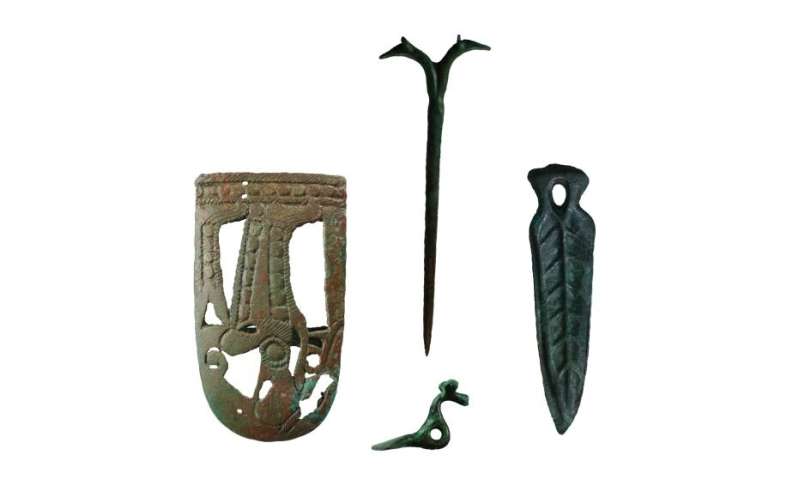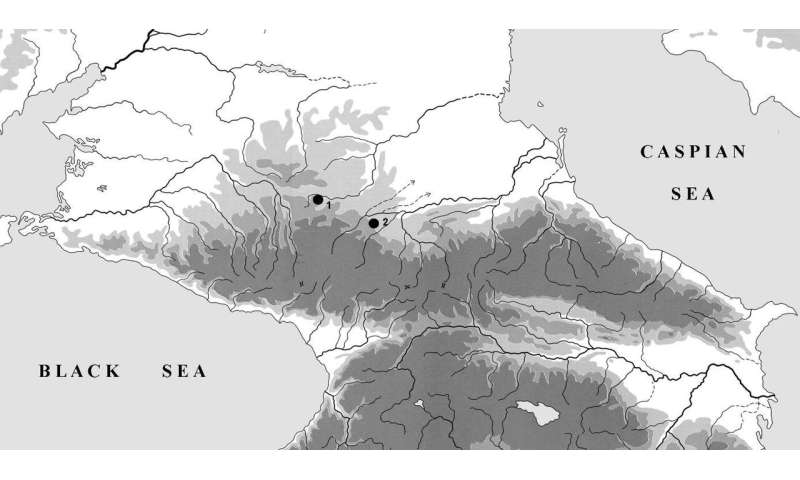The kinship of the Koban culture people with with ethnic groups of the Northern Caucasus has been proved

A group of scientists from the Institute of Archaeology RAS, NRC "Kurchatov Institute" and other scientific organizations for the first time have carried out a genetic analysis of the remains from the cemeteries of the Koban culture dated between 9th and 5th cc. AD. The analysis of the paleo DNA on mitochondrial and Y-chromosome haplogroups has confirmed the genetic succession of the cultures of ancient Caucasus and its relation both with ancient and with modern ethnic groups inhabited this region. The results of the research were published in Journal of Archaeological Science: Reports.
"The Koban archaeological culture which is considered to be a bridge between the cultures of the Bronze Age and modern ethnic groups on the Northern Caucasus has not been studied genetically yet. Our data allows deeper understanding the origin and genetic diversity of the Northern Caucasian communities on the rim of the Bronze and Iron Age and demonstrates that the population left the sites of the Koban culture has the continuity with other ancient and modern ethnic groups of Caucasus", said the head of the research and the department of theory and methodology of IA RAS, Dr. Dmitry Korobov.
The bones remains of the fourteenth individuals of the Koban archaeological culture have been selected for the research. Five of them have been received from the burials of the barrow Klin-Yar 3 in the vicinity of modern Kislovodsk during the excavation works in 1994-1996, and nine of them—from the complex of the archaeological sites near the village Zayukovo in Kabardino-Balkaria which has been studied systematically since 2014 by the co-operative expedition of the State Historical Museum and Kabardino-Balkaria State University with the participation of the IA RAS.
The samples of paleo DNA have been extracted from the teeth and bones in the laboratory of NRC "Kurchatov Institute" to identify maternal and paternal haplogroups, the groups that unite men who have common ascendant with the similar mutation in core or mitochondrial genome.
The analysis of the ancient DNA of the individuals from the burials of the Koban archaeological culture has revealed the predominance of some mitochondrial and Y-chromosome haplogroups spread in ancient Europe and Caucasus.
Main haplogroups of Y-chromosome received by the researchers are common for Caucasus and Europe in the period of the Iron Age: E1a2a, G2a1a, R1b and R1a.
The haplogroup G2a1a which now is widely spread among the Ossetians, Balkars and Svans is usually associated with Middle Eastern and European Neolithic cultures. Of the special interest is the haplogroup that had been discovered earlier during the examination of the buried in T-shape catacombs which are traditionally related to the Alans inhabited Ciscaucasia and the Northern Caucasus in the period from the 1st till the beginning of the 2nd millennium which might say about their genetic relation with the previous population of the Koban culture.

The haplogroups R1a and R1b is usually associated with the Indo-European migrations and were described at the Scythes and Sarmatians. Nowadays these haplogroups together with the haplogroup E1a2a have been identified at modern Northern Caucasian ethnic groups: the Balkars, the Karachi, the Darghins, the Lezghians and the Abkhazians. Therefore, the genetic researches have confirmed the theory about the Scythian influence on the Koban culture which till present had been based on solely archaeological material.
The haplogroups of the mitochondrial DNA of the humans who were buried in the cemeteries of Klin-Yar-3 and Zayukovo-3 are related to H20a, J1c, N, HV1, T1a, H1e, W5a, R6, I1, the groups that have been discovered earlier both at the ancient and the modern ethnic groups of the Northern Caucasus.
Among the buried the individual from the burial Zayukovo-3 outstands with the rare HV mitochondrial haplogroup that penetrated into Europe through the territory of Caucasus after the last Ice Age maximum (26,5—19 thousand years ago) and in the Neolithic period (10—3 thousand years ago). Also this man was different with an unusual genetic origin and the paternal line, the haplogroup of the Y-chromosome of this sample D1a2a1 is widely described in Eastern Asia.
"Further researches of the ancient mitochondrial and core genomes of the Koban, Sarmatian, Alanian and other ancient cultures of Caucasus and their comparison with the DNA of modern ethnic groups inhabiting Northern Caucasus will allow specifying the hypotheses on their origin and genetic heritage among the representatives of modern ethnic groups", supposes Dmitry Korobov.
Historical Note
Its name the Koban archaeological culture received in accordance with the name of the village Verkhniy Koban (the territory of modern Northern Ossetia) near which the burials with bronze items of this culture were found for the first time in the middle of the 19th century. Later on the territory of modern Ingushetia, Kabardino-Balkaria, Karachay-Cherkessia, Northern and Southern Ossetia, Chechnya and Georgia another sites of this culture—the cemeteries and the settlements—were discovered and examined. Nowadays it is known that the representatives of Koban archaeological culture were living on both sides of the Greater Caucasus Mountain Range in the period between late Bronze Age and early Bronze Age from the 13th till the 4th cc AD. On the north-west the Koban inhabitants were neighboring with the Meotes, on the south—with the Colchian culture people. On the north the Koban inhabitants neighbors were in the beginning the Srubna culture people and later the Koban tribes were closely interacting with the Scythes and Sarmatians the influence of whom can be traced in the Koban culture from the 8th century till the 4th century AD. The Koban tribes knew cattle breeding, farming and perfectly mastered the technologies of metal working.
The Koban culture was considered by many researchers as autochthonous culture of the Northern Caucasus. It was considered that the Koban culture played the important role in forming of some modern ethnic groups of the Northern Caucasus but there is no direct evidence received earlier.
Provided by Institute of Archaeology of Russian Academy of Sciences